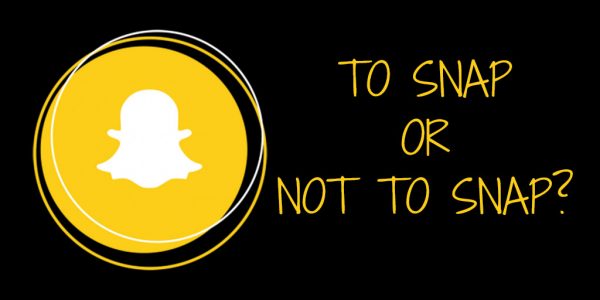Snapchat has been a staple on the social media circuit for as years now, but can it sustain itself in an era of Instagram stories?
When Snapchat was first developed in 2011, the idea of sending “disappearing” videos and photos to either a single person or a group was innovative and unique. Teenagers were automatically hooked: remember the agony of losing a 200-day streak or constantly checking to see how many people viewed your Story?
In 2014 and 2015, Snapchat and Instagram were different enough to have separate purposes. For both personal and business accounts, Instagram was a place to show more curated content whereas Snapchat was a mode of communication more similar to texting than to Instagram-ing. However, in 2016 Instagram introduced their own Stories feature which was very similar to the original Snapchat Stories. Now, both regular people and businesses could upload two kinds of content on one platform, saving time and even money.
Snapchat responded by launching a series of updates that nearly changed the original functionality of the application. The first biggest change was the Discover function, which offers content from major corporations like Cosmopolitan, The New York Times, and NBC, just to name a few. The Discover function also features stories from social media-famous individuals.
Rather than catapulting them back into the social media spotlight, however, Snapchat’s many updates has been causing some backlash. Their newest redesign, which was announced in 2017, saw the most negative response, culminating with Kylie Jenner tweeting about her disappointment with the new update which caused Snapchat’s stock to plummet 6% (1.6 billion in market value).
The end result of all this is that many individuals have focused their attention more on Instagram Stories rather than Snapchat Stories and streaks. While the majority of people in the teenage demographic still have Snapchat, they just don’t use it as much as they used to. But how does all this affect UConn Social?
We’ve noticed that there is not as much engagement on the @UConnOfficial Snapchat as there is with the @UConn Instagram Stories. One reason for this is because the majority of our demographic engages more with Instagram than Snapchat. However, another major difference between the two applications is that tracking analytics on Instagram is straightforward and productive, whereas Snapchat analytics are not at all comprehensive.
With a business account on Instagram, one can see the viewers, impressions, and actions (among other things) of any posted Story. Snapchat shows none of these things.To combat this lack of information, UConn Social attempted to use Mish Guru, a third party service, to track our Snapchat analytics. The catch? It costs money, whereas Instagram's business analytics are completely free. Pumping money into a platform that already had declining engagement didn’t seem like the best move, so we ended our brief relationship with Mish Guru.
For all businesses -- but most especially social ones like us -- tracking analytics is a key to our success and is one of the major places that Snapchat really misses the mark. Between the lack of analytics and the declining overall engagement, Snapchat doesn’t seem to be the best place to spend the majority of our time and energy. Sorry, Snapchat; it’s not us, it’s you.
